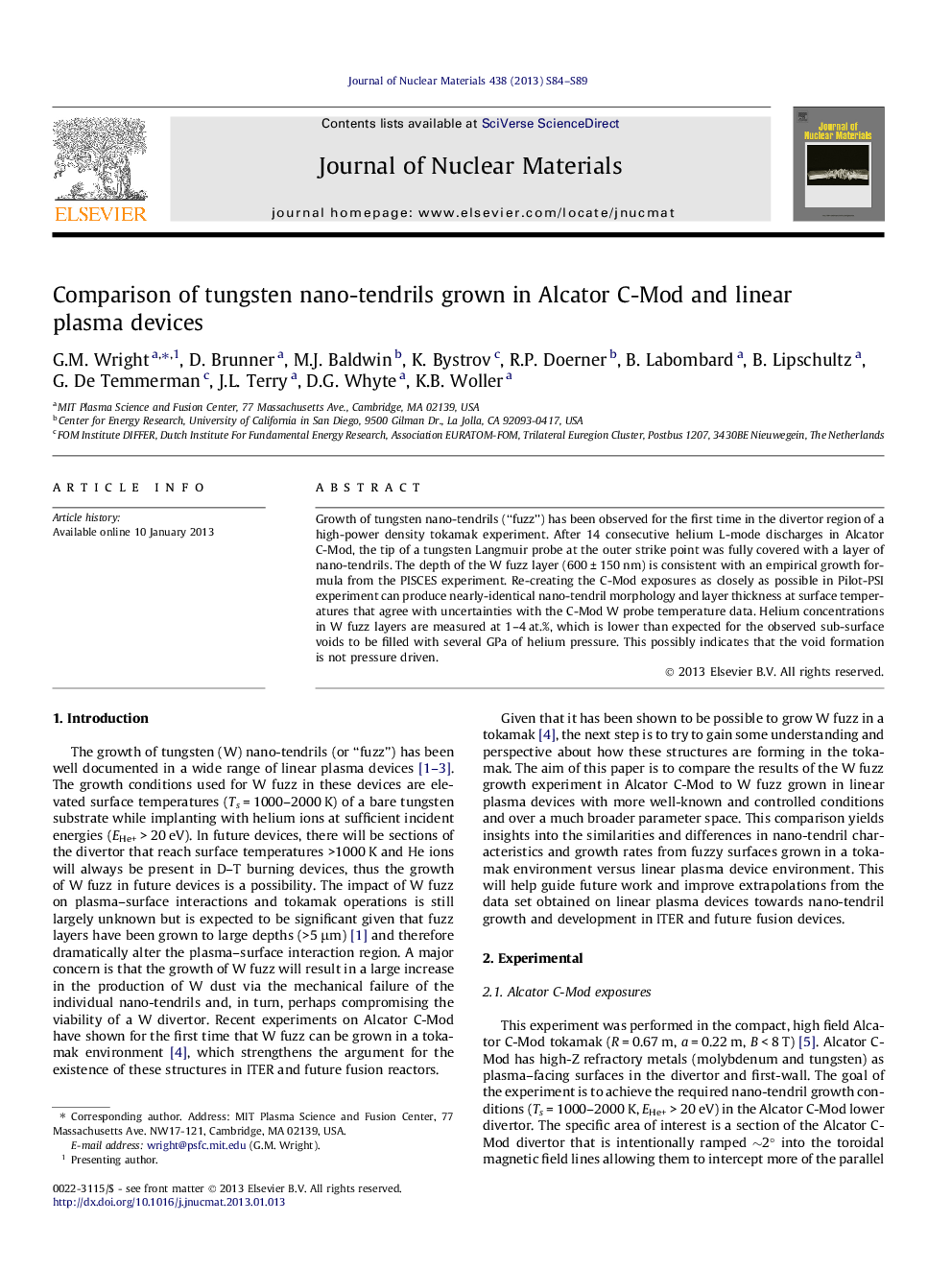| Article ID | Journal | Published Year | Pages | File Type |
|---|---|---|---|---|
| 10644954 | Journal of Nuclear Materials | 2013 | 6 Pages |
Abstract
Growth of tungsten nano-tendrils (“fuzz”) has been observed for the first time in the divertor region of a high-power density tokamak experiment. After 14 consecutive helium L-mode discharges in Alcator C-Mod, the tip of a tungsten Langmuir probe at the outer strike point was fully covered with a layer of nano-tendrils. The depth of the W fuzz layer (600 ± 150 nm) is consistent with an empirical growth formula from the PISCES experiment. Re-creating the C-Mod exposures as closely as possible in Pilot-PSI experiment can produce nearly-identical nano-tendril morphology and layer thickness at surface temperatures that agree with uncertainties with the C-Mod W probe temperature data. Helium concentrations in W fuzz layers are measured at 1-4 at.%, which is lower than expected for the observed sub-surface voids to be filled with several GPa of helium pressure. This possibly indicates that the void formation is not pressure driven.
Related Topics
Physical Sciences and Engineering
Energy
Nuclear Energy and Engineering
Authors
G.M. Wright, D. Brunner, M.J. Baldwin, K. Bystrov, R.P. Doerner, B. Labombard, B. Lipschultz, G. De Temmerman, J.L. Terry, D.G. Whyte, K.B. Woller,
